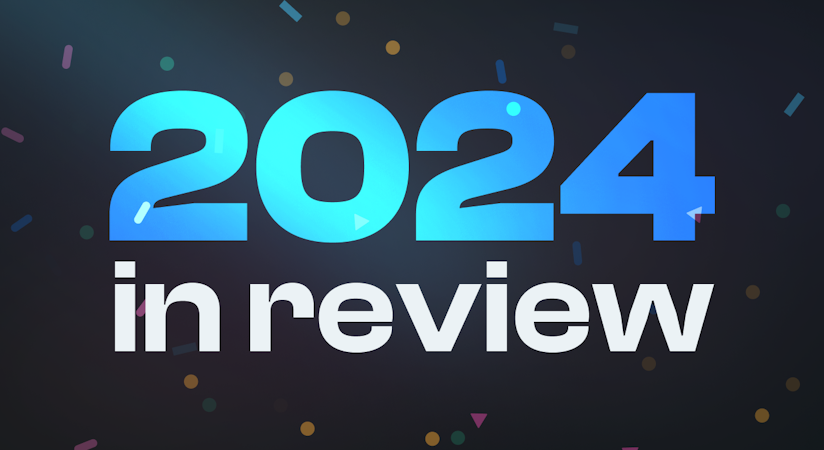
Kyle Meagher
March 12, 2021


Creating websites and developing web applications is arguably easier than ever thanks to the broad number of open-source frameworks at your disposal. Whether you’re developing a simple static website or an e-commerce platform designed to scale, you have plenty of framework options, including Gatsby and Next.js.
Using web frameworks, you can develop viable websites much more efficiently than if you started from scratch. Moreover, by combining frameworks with a headless Content Management System (CMS), you get the best of both worlds. That is to say, a system that enables you to create and manage content at scale with a small performance footprint, alongside all the tools you need to create user-friendly website for users to interact with.
As powerful a combination as that is, you can’t go ahead and use any framework alongside any headless CMS. Fortunately, both Gatsby and Next.js happen to be fantastic options to use alongside a headless CMS (such as Cosmic).
In this article, we’re going to compare Gatsby vs. Next.js to help you choose the right framework for your next web project. We’ll talk about how they handle data and render static websites. Then we’ll go over headless CMS integration for both frameworks. That way, you’ll have all the information you need to make an informed decision.
An Introduction to Gatsby and Next.js
Both Gatsby and Next.js are among the most popular frameworks for websites and online applications. Some of the most popular websites in the world use Next.js, including Twitch, Hulu, and Nike. Gatsby doesn’t fall far behind, though, with plenty of household names attached to the framework, including IBM and PayPal.
It would be easy to say that both frameworks are so popular because they’re based on React. Since its launch in 2011, React has become one of the web’s most loved frameworks. That’s not an exaggeration either, it actually beat out Vue.js in an internal Stack Overflow survey in 2019 that asked developers what their favorite framework was.
Despite the fact that both Next.js and Gatsby share roots, they’re very different frameworks with unique applications. In a nutshell, Gatsby combines React and GraphQL to provide you with a user-friendly tools that you can use for static website generation.
Next.js, on the other hand, generates HTML dynamically whenever your server gets a new request. That has an impact on website performance, but it’s also necessary for dynamic websites. If your website has users, includes comments, or you sell products online, static pages simply won’t cut it.
Gatsby vs Next.js: Which Framework Is Best for Static Content Generation?
Now more than ever, we understand that site performance is critical when it comes to providing the best possible user experience. As much time and effort as you spend into optimizing your setup, dynamic websites, by design, can’t match the sheer speed of static pages.
If you’re working a website where you know you won’t need to update pages often or use dynamic elements, a framework such as Gatsby is your best bet. Using Gatsby, you only load critical HTML, JavaScript, and CSS, which makes it a steamroller when it comes to performance.
The primary difference between Gatsby and Next.js is that the former generates HTML content on the client-side. That means if you use Gatsby to build your web application, your server doesn’t need to render anything when it gets a request – it all happens during build or runtime time.
Next.js isn’t necessarily a worse choice from a performance standpoint. However, the way the framework works (pardon the pun) means that whenever someone attempts to visit your website, your server generates the page that they’ll see dynamically.
It’s important to note that during recent updates, Next.js has made a lot of strides when it comes to static content generation. Next.js 9.3 introduced support for static side generation, which means the framework now also support build-time rendering.
That makes Next.js a great option both for dynamic and static websites. However, Gatsby still has an edge when it comes to the latter since it’s baked into its DNA.
Gatsby vs Next.js: How Each Framework Tackles Data Handling
Gatsby has a structural advantage over Next.js as far as data security goes. However, that’s because the framework doesn’t fetch data from your server or a database. By their nature, static content generators are more secure, but that means your options are limited if you need dynamic data handling.
For example, if you want to enable user registration, commenting, dynamic elements, and more, then you need to expand Gatsby’s functionality. Fortunately, that’s possible. The framework offers a lot of plugins that enable you to connect with CMSs such as WordPress and it also works with headless options (which we’ll discuss in a minute).
One data-handling aspect where Gatsby does shine is when it comes to images. The framework comes with massive library of plugins that you can use to extend its functionality. For example, Gatsby-imagesenables you to resize the images your visitors see at build time, which translates to faster loading times without it impacting server usage. Plus, it also includes lazy-loading functionality.
To put it another way, serving a static website doesn’t mean that your pages will look boring. As we mentioned before, plenty of household-name companies use Gatsby, and if you check out their websites, you’ll see they’re far from being drab.
Next.js, on the other hand, is capable of data handling. However, just like with Gatsby, you need to set up a backend solution that can actually manage the data and content Next.js uses to generate pages dynamically.
Why Use Gatsby or Next.js With a Headless CMS
The concept of a headless CMS is simple. You take what is arguably the best part of a CMS, which is content management and generation, and use that as the backend for your web projects. That frees you up to use any approach that you want when it comes to the frontend, which includes using React frameworks such as Gatsby and Next.js.
So far, we’ve gone over a lot of the upsides and downsides of using Next.js and Gatsby. Using the right headless CMS, you can make up for a lot of either framework’s downsides. Let’s break down how:
- Content creation and management. With the right CMS, you get powerful features that enable you to create, edit, and publish content more efficiently. You use your preferred framework for rendering, but get access to a user-friendly CMS for everything else.
- Data handling. CMSs provide data-handling solutions for both Gatsby and Next.js.
- Scalability. Instead of generating and maintaining each page manually from the ground up, a CMS provides you with tools to ensure that you can manage data efficiently.
The whole point of using a headless CMS in combination with a React framework is to provide you with a flexible setup that adapts to whichever type of project you intend to develop. With the right headless CMS, you can launch any type of website, from a simple blog to an online store, and use your preferred React framework to power its frontend.
There are plenty of options when it comes to headless CMS integrations for both Gatsby and Next.js. However, Cosmic provides built-in support and functionality for both frameworks.
If you want to use Next.js, you can create a Next.js app and install the Cosmic NPM module in a matter of minutes. Launching a project that combines Cosmic with Gatsby is equally as simple, since there’s a Cosmic source plugin for the framework.
With Cosmic, you get a cloud headless solution that works with most popular frameworks. The headless CMS provides both a GraphQL and a REST API, which makes it an incredibly versatile solution.
When to Use Gatsby vs Next.js (And Vice Versa)
Although both Gatsby and Next.js are fantastic framework options to use alongside a headless CMS, they’re not interchangeable solutions. Let’s go over which framework you should use depending on the type of project that you’re working on:
- Gatsby. This framework’s strength lies in its unmatched static site generating performance. Although using a headless CMS can make up for a lot of features that it doesn’t offer out of the box, Gatsby is perhaps not the best option for client-side applications or websites that require massive amounts of dynamic content.
- Next.js. If you’re working on a project that’s about as far as you can get from static, Next.js definitely has an advantage over Gatsby. When you combine its features with a headless CMS, you get a stack that’s about as flexible as it gets.
Overall, which framework to use comes down to the type of project you’re working on. If you use Cosmic, though, you can easily switch between frameworks for each new project and still get to use the same backend.
If you’re ready to check out what a headless CMS platform can enable you to do, try out Cosmic. We offer a free Personal plan that use can use to check out the platform.



